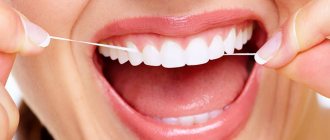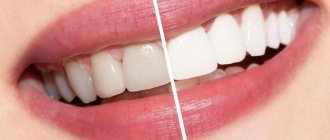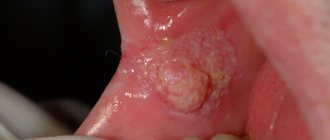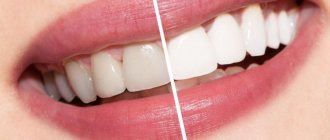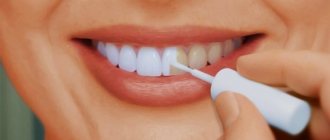Sometimes it can be difficult to understand what makes a face beautiful. Almond-shaped eyes, a regular nose or prominent cheekbones...
To determine the degree of attractiveness of a face, we use a mathematical method. As part of the harmonizing approach developed by Andrei Iskornev, in our clinics we calculate the exact proportions between individual parts of the face that make us more attractive.
It turns out that the distance between the upper lip and the nose is of great importance. Ideally, it should be no more than a quarter of the distance from the nose to the chin and range from 12 to 18 millimeters.
What is bullhorn cheiloplasty?
Bullhorn lipplasty is a plastic surgery, one of the types of cheiloplasty.
If we use medical terminology, a bullhorn is a subnasal surgical lift, the purpose of which is to reduce the distance between the nose and upper lip. This allows you to enlarge the upper lip and reduce its skin part.
The name of the procedure comes from the English bull's horn: a small incision in the fold under the nose is shaped like bull's horns.
Since reverse correction of bullhorn results is practically impossible, we at Platinental approach the planning stage very carefully. Before surgery, we take a series of anatomical facial measurements to calculate your individual beauty formula.
After all, the goal of this operation is not just to enlarge the upper lip. The goal is to make your lips sensual and your face more attractive.
The point is that there should be a place for lips on the face. And if the distance from the base of the nose to the upper lip is small, especially in combination with a drooping tip of the nose, we often recommend another correction method.
When forming the incision, we repeat the shape of the base of the nose so that the seam after the operation is carefully hidden in the fold underneath it.
Using a special microsurgical technology and without tissue tension, we form the thinnest possible suture, which after healing becomes no thicker than a human hair.
Doll lips
Puppet lips with a bow give the deceptive impression that in front of you stands a delicate flower that needs to be protected from the dangers of the big world. Don't be naive: girls with this lip shape can always stand up for themselves. They make strict but fair leaders who demand iron discipline from their subordinates. At the first meeting, the owners of doll lips may seem stern, selfish and withdrawn, but you should definitely get to know them better. Such girls are simply accustomed to keeping their experiences to themselves. They are not iron ladies, they are characterized by compassion and self-sacrifice, and if you earn their trust, you will find reliable support and a devoted friend in them.
You may also like these materials:
Brighter look! Care for the skin around the eyes so they shine and don't look tired
Honey caramel, rainbow opal, dark chocolate and other most fashionable hair colors of autumn 2020
When is lip surgery needed?
Bulhorn upper lipplasty is used to bring the distance between the upper lip and the nose to harmoniously perfect proportions. Therefore, the indications for surgery are very diverse:
- Lip augmentation.
After surgery, the thin upper lip gains more volume and sensuality.
- Strengthening the cupid's arch.
Since the operation is aimed only at the middle part of the upper lip, it allows you to create a pronounced cupid's arch and make your lips sexier.
- General facial rejuvenation.
Over time, the lips become thinner and longer, and the distance between the tip of the nose and the upper lip increases. The bullhorn lip lift significantly rejuvenates the lower third of the face.
- Harmonization of appearance.
The fact is that an increased disproportion between the nose and upper lip, even on a young face, is perceived by our subconscious as a sign of age. Normalizing this parameter returns youthful features to the face.
- Beautiful open smile.
The correct distance between the nose and upper lip is not only responsible for attractiveness. Due to the nature of the bite, the upper lip may hide the upper teeth. This smile looks closed and the teeth appear short.
Bulhorn allows you to get a correct and beautiful smile when, at rest, the upper lip exposes the front incisors by 1/3, and when smiling, it opens the teeth of the upper row.
The ratio of lip volume to other facial parameters
In addition to a sober assessment of the initial structure of the lips, it is important to take into account the overall proportions of the face.
Rhinoplasty surgeons know that the problem of a large nose is not always associated with the true massiveness of its tissues. A prominent nose may be a consequence of chin hypotrophy and distal occlusion.
A similar story with the mouth. The same medium-sized lips will look completely different on a petite heart-shaped face and a full square face. Other parts of the face also play a major role in perception - eyes, nose, cheekbones.
People with the following initial data can safely enlarge their lips:
- Oval shaped face with regular features
- Smooth contour of the lower jaw, narrowed downwards
- High cheekbones
- Large distance between the philtrum and the tip of the nose
- Thinness of lips in comparison with other facial features
- Normal bite
People with the following data should approach lip augmentation with caution
- Elongated and angular face shape - with the slightest overcorrection there is a risk of getting the rough appearance of a “travesty”
- Large and bulging eyes - with hypercorrection there is a possibility of becoming like the heroine of a Soviet cartoon about the blue sea
- Open bite - with overcorrection, the lower part of the face will protrude more forward, which will create something of a “Neanderthal” effect
- A small face with subtle “doll-like” features - with hyper-correction you will get a caricature, or even “alien” appearance
This does not mean that you should forget about lip shape correction for the listed features. But this means that you should choose a doctor with a developed aesthetic sense and taste, who is interested in the beautiful result of the procedure, and not in selling a large dosage of filler.
Also, do not insist on a specific volume: the cosmetologist can better see what your lips and face as a whole . It is more profitable to come back for correction and add fullness after distribution and “shrinkage” of the drug than to inject hyaluronidase to completely or partially break down the gel.
Hypercorrection?
Cosmetologists often have to be torn between the medical rule “do no harm” and the corporate rule “the client is always right.”
And yet, an honest doctor would rather choose the option of parting with one client than tarnish his reputation. “Duck” lips are the object of mass ridicule and jokes. Online celebrities, who 5-6 years ago promoted their huge lips as an “image feature,” got rid of them surgically. “Experienced” patients in terms of contour plastic surgery are showing more and more caution with the previous requests to “inject the maximum volume.” And cosmetologists who allow hyper-correction create anti-advertising for themselves.
We don't like lips that are enlarged like this:
We pay special attention to the formation of invisible seams
The bullhorn scar is located in the visible part of the face. To disguise it, we at Platinental use a number of proprietary developments and tricks that we have accumulated over a long period of practice.
For example, we make an incision under the nose so that after healing it is securely hidden by the anatomical structures of the nose and falls out of sight. We perform fixation and suturing of the scar exclusively using microsurgical techniques. Due to this, the scar after bullhorn turns out thin and practically invisible.
If a small scar is still embarrassing, we perform laser resurfacing of the scar. But, as a rule, this is not required.
Expert comment:
“Bullhorn is not as simple an operation as it looks at first glance.
Before conducting it, I always take into account the rules of harmony and proportions of the golden section. My experience shows that to correct a smile and enlarge the upper lip, it is enough to remove literally 1-2 mm of skin.
Even with a strong desire to get plump lips, excision of a wide flap for bullhorn is contraindicated. On the one hand, this is fraught with excessive inversion of the mucous membrane, which cracks and becomes inflamed. On the other hand, a short distance between the nose and upper lip destroys attractive proportions and adds several years to the face.
Choose your bullhorn surgeon carefully. Do not forget that this operation is performed in the area of the most visible part of the face, and it is almost impossible to correct its results. There is no point in taking risks; correcting bad work in this case will be very difficult and expensive.”
Maxim Vasiliev, plastic surgeon.
Frenum of the lip and tongue
Lip frenulum
The attachment of the lips to the jaw is ensured by special folds of the mucous membrane that run along the midlines of the inner surface of the lips.
If the size of the fold is proportional, then the lip completely covers the teeth when they close and has sufficient mobility. However, in some patients the labial frenulum is shortened or attached to the jaw too low. In this case, its functions are impaired. A shortened labial frenulum is a congenital defect, the causes of which have not yet been accurately determined.
While the child is still small, a short frenulum of the lip usually does not cause him any discomfort. This defect does not affect the formation of the facial skeleton, so for the time being it is left without medical intervention. Problems may appear during the period when baby teeth change. If, after the eruption of the upper central incisors, the frenulum of the upper lip becomes wedged between them, then even with straight teeth, an unsightly gap (diastema) will remain between them, which does not decorate the smile. A cosmetic problem is not the only drawback of a shortened lip frenulum. Its low attachment creates an increased load on the teeth, as a result of which the bone tissue in this area becomes thinner over time. This often leads to the development of periodontal disease in older patients.
Correction of such a defect as a shortened frenulum is possible only through surgery. Such an operation is not indicated in all cases; it is usually performed only on the recommendation of an orthodontist. Plastic surgery of the upper lip frenulum is permissible only after complete eruption of the upper lateral incisors.
The frenulum of the lower lip also often becomes a source of dental problems. A short frenulum of the lower lip can cause gum recession, exposing the roots of the mandibular anterior teeth. In addition, a short frenulum of the lower lip provokes periodontal diseases and the occurrence of malocclusions.
The optimal age for correction of the frenulum of the lower lip is 6-7 years. Most often, this procedure must be performed before orthodontic treatment (bite correction). In adults, plastic surgery of the lower lip frenulum is often combined with an operation to deepen the vestibule of the oral cavity before dental prosthetics.
This operation is performed on an outpatient basis, under local anesthesia. The surgeon excises a fold of mucous membrane and then places stitches on it. The operation takes no more than 15-20 minutes, postoperative sutures dissolve on their own. Using a laser scalpel allows you to do without anesthesia, and the healing process is also much faster.
However, you should know that frenuloplasty is only a preparatory stage for orthodontic treatment, since the gap between the teeth will not decrease on its own. Correction of the dentition can begin only after the final resorption of the sutures. Carrying out such an operation at a later age is also possible, but the orthodontic treatment procedure will undoubtedly be longer.
Tongue frenulum
If you lift the tongue upward and slightly move it back, on the lower surface you can clearly distinguish a cord running along the central line from the mucous membrane of the tongue to the very bottom of the mouth and ending almost at the surfaces of the lower incisors. This cord is called the frenulum of the tongue; its normal length in an adult ranges from 27 to 30 mm.
It also happens that the end of the frenulum of the tongue is not located on the mucous membrane, but almost at its tip. If the tongue is stuck out, it barely covers the lower lip; its further advancement is hampered by the shortened frenulum. True, it is not always shortened; sometimes the mobility of the tongue is limited due to improper attachment of the frenulum, but more often it is actually 12-15 mm shorter than normal.
Is the inability to properly stick your tongue out of your mouth really a serious problem that needs to be discussed? Imagine, yes!
The problem of a short frenulum is quite serious; for example, even in infancy it can become an obstacle to normal sucking. The child becomes restless, does not eat enough, is capricious, cries, and loses weight. In such cases, surgery to excise the frenulum of the tongue is performed immediately. Immediately after the operation, the baby is given breastfeeding, which helps develop the tongue and make it more mobile.
A shortened frenulum of the tongue can make itself felt at a later age. In this case, the tongue is located between the teeth, complicating the breathing process and interfering with the pronunciation of a number of sounds. This leads not only to diction disorders, but also to the formation of dental anomalies, which in turn requires bite correction. Moreover, orthodontic treatment requires time and financial costs. Typically, children of primary school age undergo frenulectomy surgery on the recommendation of a speech therapist. After the operation, special gymnastics for the tongue are prescribed, in addition to which the child undergoes a course of treatment from a speech therapist aimed at preventing, and even more often correcting, diction defects.
For adults, a short frenulum of the tongue also causes a lot of trouble. It can significantly interfere with normal chewing of food and wearing removable dentures. But still, tongue frenuloplasty is usually performed much earlier than natural teeth have to be replaced with dentures. Healing of an excised frenulum occurs most quickly in infancy, however, even in primary school, and even in adolescence, such an operation is very effective, and complications in the postoperative period are extremely rare.
Bullhorn varieties
The bullhorn operation is not always performed according to the same scenario. It has several modifications.
1. For example, there is the so-called internal, or VY bullhorn , when during the operation additional hidden incisions are made in the upper lip from the mucosal side.
The surgeon performs 2 incisions of the upper lip in the shape of a V followed by suturing in a Y shape. This method allows you to enhance the effect of plump lips and get a very natural result.
2. There is also an " Italian bullhorn ". In this case, the incision is not made in one continuous line, but consists of two small incisions to the right and left of the columella.
The advantages of this option include the fact that the scar under the nose after such a procedure is practically invisible. The downside is that this method will not lift the upper lip significantly.
Is it possible to do non-surgical bullhorn?
To enlarge the upper lip without surgery, it is enough to do lip augmentation with hyaluronic acid. However, lip correction with fillers is not always suitable for a number of reasons.
Firstly, to maintain lip size, fillers need to be pinned about twice a year.
Secondly, with initially thin lips, fillers cannot significantly affect their size.
Thirdly, what we talked about from the very beginning, the root of age-related changes in appearance most often lies not in the lips themselves, but in the increased distance between the upper lip and the nose. It is this problem that non-surgical correction cannot solve.
Regular, or Cupid's Bow
The symmetrical shape of the lips is also called Cupid's Bow: according to scientific research, this is the sexiest and most desirable shape that women strive for and men are delighted with. Happy owners of Cupid's Bow are characterized by prudence: they are calm and consistent, it is difficult to unbalance them and anger them. Such people are the best negotiators, partners and psychologists; they can easily put themselves in the shoes of their interlocutor, so they are always ready to compromise or give practical advice. Meanwhile, they can always stand up for themselves and defend their values. Owners of this lip shape are intellectuals and treat others with respect. It is also believed that they are characterized by healthy optimism and a sense of humor.
